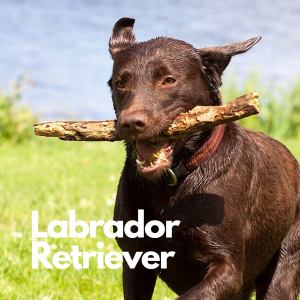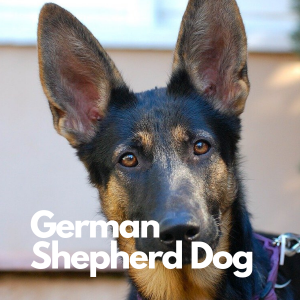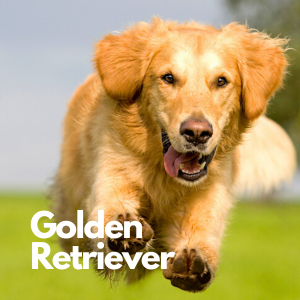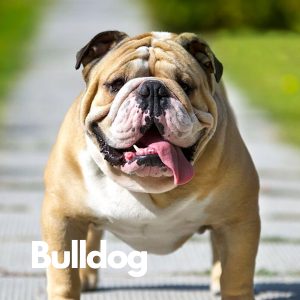

Sporting

55-80 lbs.

21.5-24.5 in.

10-12 years
- Key Characteristics of Labrador Retriever Puppies
- Origins of Labrador Retriever Puppies
- Temperament of Labrador Retriever Puppies
- Is This the Right Dog for You?
- More Stats About Labrador Retrievers
- Nutrition for Labrador Retriever Puppies
- Training Labrador Retriever Puppies
- How to Adopt Labrador Retriever Puppies
- References
Key Characteristics of Labrador Retriever Puppies
Labrador Retrievers have been one of America’s best-loved pets for decades, known for their loyal, sweet dispositions and playful, active personalities.
- Coat Colors: Black, yellow, and chocolate
- Swimming Ability: Bred to withstand the icy Newfoundland seas, Labs are strong, tireless swimmers who can tolerate cold water for long periods, making them ideal for retrieving nets and downed waterfowl while hunting.
- Modern Roles: Today, Labs have extensive roles in search and rescue, drug detection, water rescue, hunting, and tracking.
- Service and Therapy Dogs: Their tame, affable personalities make them wonderful service dogs and animal-assisted therapy dogs.

Origins of Labrador Retriever Puppies
Despite their name, Labrador Retrievers originated in Newfoundland, now part of the province of Newfoundland and Labrador in Canada.
- Early History: In the 16th century, Europeans developed the primary forbear of the Lab, the St. John’s Water Dog, also known as the St. John’s Dog or Lesser Newfoundland. These dogs’ jobs included jumping into the ocean to retrieve fishermen’s nets.
- Breed Development: As more people settled the area, they brought Mastiffs from Portugal, which crossed with the St. John’s Water Dog to become the first Labrador Retrievers. Although St. John’s Water Dogs died out in Newfoundland, their Labrador Retriever cousins were brought to England in the early 19th century by the Duke of Malmesbury from a geographical area referred to as “the Labrador.” After preserving and refining the dog to its current breed standard, Malmesbury produced the Labrador Retriever we know today.
Temperament of Labrador Retriever Puppies
Intelligent, hardworking, kind, loving, playful, and gentle, Labs have one of the best temperaments among all dog breeds. More than 92% of Labs who have taken the American Temperament Test have passed with flying colors.
- Soft-Mouthed: They are so soft-mouthed that they can carry a raw egg in their mouths without breaking it.
- Family Companions: Given these positive traits, Labs are ideal family dogs, providing loyal companionship to adults and children.
Is This the Right Dog for You?
Exercise Needs
HIGH: Active dogs who are unfortunately prone to obesity, Labrador Retriever puppies need a lot of exercise to stay in top physical condition and to prevent them from acting out.
- Daily Exercise: 20 minutes of vigorous exercise such as running, fetching, swimming, or play.
- Minimum Activity: At least 10 or 15 minutes of ball throwing.
- Behavior: Though relatively quiet, Labs will sound an alarm bark, which can turn into unwanted, excessive barking if they aren’t given enough exercise and mental stimulation.
Grooming Needs
MEDIUM: Labrador Retriever puppies will blow their coat seasonally but still shed constantly, requiring regular grooming.
- Brushing: Brush at least once a week, preferably more often.
- Additional Grooming: Nail trims and ear cleaning as needed.
Health Problems
HIGH: Due to the breed’s popularity, Labrador Retrievers have been overbred, leading to various genetic health problems.
- Common Issues: Obesity, osteoarthritis, luxating patellas, and hip dysplasia.
- Eye Problems: Cataracts, progressive retinal atrophy, and retinal dysplasia.
- Exercise-Induced Collapse: A condition causing hyperthermia, weakness, collapse, and disorientation.
More Stats About Labrador Retrievers
- Friendliness: ★★★★★
- Ease of Training: ★★★★★
- Barking/Howling: ★★★★☆
- Shedding: ★★★★★
- Tolerate Being Alone: ★★☆☆☆
- Very Good With Kids: ★★★★★
Learn more about Labs in this great video:
Nutrition for Labrador Retriever Puppies
Proper nutrition is essential for the healthy growth and development of Labrador Retriever puppies. Consider these nutritional guidelines:
- Balanced Diet: Provide a balanced diet that includes high-quality protein, healthy fats, and essential vitamins and minerals.
- Portion Control: Avoid overfeeding to prevent obesity. Follow feeding guidelines based on your puppy’s age, weight, and activity level.
- Hydration: Ensure your puppy has access to fresh water at all times.
Training Labrador Retriever Puppies
Labrador Retrievers are known for their intelligence and eagerness to please, making them relatively easy to train. Here are some tips for training your Labrador Retriever puppy:
- Basic Commands: Start with basic commands such as sit, stay, come, and heel.
- Socialization: Expose your puppy to different environments, people, and other animals to help them become well-rounded adults.
- Positive Reinforcement: Use treats and praise to reward good behavior.
- Consistency: Be consistent with your training methods and commands.
How to Adopt Labrador Retriever Puppies
There are many Labrador Retriever puppies in shelters or rescues across the country in need of good homes. Use our free online dog adoption search to check if your local shelter or rescue has a Labrador Retriever who’s waiting for you.
Tips for Adopting from a Breeder
- Research: If you contact a breeder, ensure you do thorough research.
- Avoid Puppy Mills: Make sure you’re not doing business with puppy mills.
Frequently Asked Questions (FAQ)
How much are Labrador Retriever puppies?
Labrador Retriever puppies typically cost between $800 and $2,000, depending on the breeder, location, and pedigree.
How to take care of Labrador Retriever puppies?
To take care of Labrador Retriever puppies, provide a balanced diet, regular exercise, consistent training, socialization, and regular veterinary check-ups.
How many puppies can a Labrador Retriever have?
A Labrador Retriever can have a litter of 6 to 10 puppies on average.
What do I need for my Labrador Retriever puppies?
You need food and water bowls, a comfortable bed, toys, grooming tools, a collar and leash, and puppy-safe treats for your Labrador Retriever puppies.
References
- “Labrador Retriever.” American Kennel Club. https://www.akc.org/dog-breeds/labrador-retriever/.
- “About the Breed.” Labrador Retriever Club. https://thelabradorclub.com/about-the-breed/.
- “The Labrador Retriever Illustrated Standard.” Labrador Retriever Club. https://thelabradorclub.com/wp-content/uploads/2018/05/Illustrated_standard.pdf.
- “Welcoming Home Your New Lab.” Lab Rescue of the LRCP. https://www.lab-rescue.org/welcoming-home-your-lab.
- Mattinson, Pippa. The Labrador Handbook: The Definitive Guide to Training and Caring for Your Labrador. Ebury Publishing. 2015.
- Eldredge, Debra, DVM, et al. Your Labrador Retriever Puppy: Month By Month. DK Publishing. 2012
- American Kennel Club Labrador Retriever Breed Information
- Labrador Retriever Club









